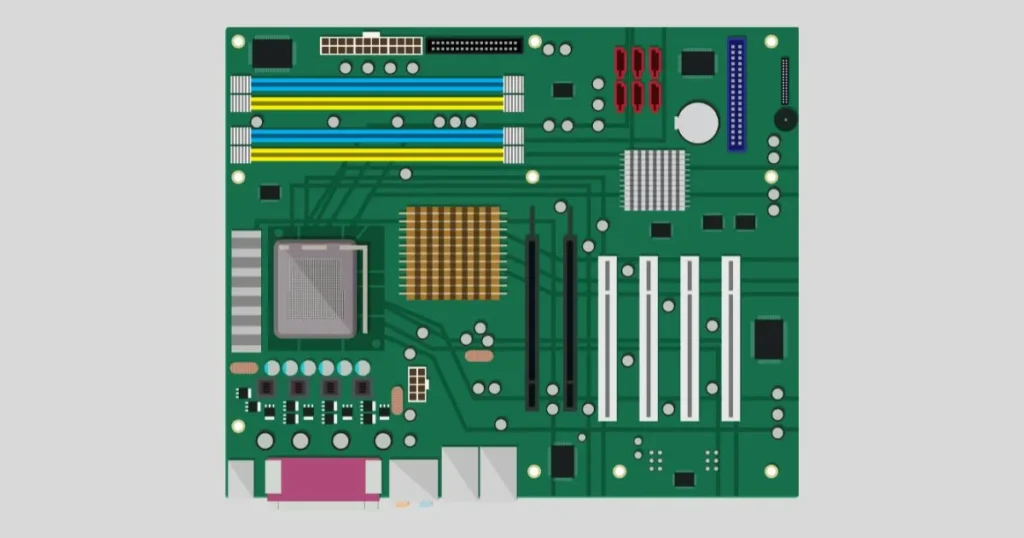Time slicing is the CPU’s method of dividing its computing cycles between multiple processes. It is a scheduling technique used by operating systems to manage how the CPU allocates time to each process.
This method allows for efficient and fair distribution of the CPU’s processing power, ensuring that all processes receive a share of the resources.
Introduction
In today’s digital age, we rely heavily on computers and other electronic devices to perform various tasks. From simple calculations to complex data processing, these machines have become an integral part of our daily lives.
With advancements in technology, computer systems have become more powerful, allowing them to handle multiple tasks simultaneously. This capability is made possible by the central processing unit (CPU), also known as the brain of the computer.

The CPU is responsible for executing instructions and carrying out calculations required by various applications. As a result, it plays a crucial role in determining the overall speed and performance of a computer system. To ensure efficient usage of the CPU’s resources, a scheduling technique known as time slicing is employed by operating systems.
Understanding Time Slicing
Time slicing refers to the division of the CPU’s computing cycles between multiple processes. It is also known as round-robin scheduling and is used by most modern operating systems such as Windows, Linux, and macOS. The goal of time slicing is to ensure that all processes receive a fair share of the CPU’s resources, preventing any one process from monopolizing the system.
The concept behind time slicing is relatively simple. The operating system allocates a fixed time slice or quantum to each process, typically ranging from 10 milliseconds to 100 milliseconds.
Once a process reaches its allotted time, it is suspended and placed at the end of the ready queue, and the next process in line is given a chance to execute. This cycle continues until all processes have been executed, and this is repeated indefinitely.
Related post: How long are computing components designed to last in a normal business environment?
Advantages of Time Slicing
1- Efficient Resource Management
One of the most significant advantages of time slicing is its ability to efficiently manage the CPU’s resources. With multiple processes running simultaneously, it is crucial to ensure that each process receives a fair share of the system resources.
By allocating a fixed time slice, the operating system prevents any single process from utilizing an excessive amount of computing cycles.
Furthermore, since all processes are given equal priority, there is no risk of a low-priority process being neglected. This allows the system to run smoothly without any significant performance issues.
2- Fairness and Responsiveness
Time slicing also ensures fairness amongst processes by giving each process an equal opportunity to execute its tasks. This prevents any one process from hogging the CPU’s resources for an extended period, leading to a more responsive system. In a time-sharing environment, the response time for each process is relatively consistent, as no single task can delay others indefinitely.
Moreover, since processes are given an equal chance to run, there is a fair distribution of resources amongst all users. This feature is especially crucial for multi-user systems where fairness and responsiveness are vital.
3- Balancing CPU Workload
Time slicing helps to balance the workload of the CPU by distributing resources among multiple processes. In a multi-programming environment, some processes may require more computing power than others, depending on their complexity and priority. With time slicing, each process receives an equal amount of time to execute its tasks, ensuring that no single process overloads the CPU.
Additionally, if a process terminates or goes into waiting state, the operating system can quickly re-allocate its time slice to another process. This way, the CPU’s resources are not wasted and can be utilized by other active processes effectively.
4- Prevention of Deadlocks
Deadlock refers to a situation where two or more processes are unable to proceed as each is waiting for the other to release a resource. Time slicing helps prevent deadlocks by limiting the amount of time a process can hold onto a particular system resource. The fixed time slice ensures that no single process monopolizes the resources, allowing others in the queue to access them eventually.
5- Prioritization of Processes
In some scenarios, certain processes may require immediate attention, and their execution cannot be delayed. For example, a system update process or an emergency backup task may require priority over other low-priority processes. Time slicing allows for the setting of priorities amongst processes, ensuring that critical tasks are executed before others.
6- Better Utilization of CPU
Time slicing plays a crucial role in enhancing the overall utilization of the CPU. Without time slicing, the CPU would remain idle for a large portion of its time as it waits for processes to complete their tasks. However, with multiple processes running simultaneously and each being allocated a fixed time slice, the CPU is constantly active, leading to better utilization of its resources.
7- Support for Multi-User Systems
In modern computing environments, multi-user systems are becoming increasingly common. In such a scenario, it is essential to ensure that all users have equal access to the system’s resources. Time slicing allows for fair distribution of resources amongst multiple users, preventing any one user from monopolizing the system.
Additionally, time slicing ensures that each user’s tasks are executed promptly and fairly, promoting a positive user experience.
How time slicing duration affects the overall working of the system?
The duration of the time slice allocated to each process can have a significant impact on the overall working of the system. If the time slice is set too short, it may lead to frequent context switching, resulting in a performance decrease as valuable CPU cycles are wasted in switching between processes instead of executing them.
On the other hand, if the time slice is set too long, it may lead to some processes hogging the CPU for an extended period, resulting in a slower response time for other processes.
Moreover, the duration of the time slice can also affect the fairness amongst processes. A shorter time slice may result in low-priority processes being neglected, while a longer time slice may give preferential treatment to high-priority processes. It is crucial to find the right balance and set the time slice duration according to the system’s needs.
Overall, the duration of the time slice must be carefully chosen to ensure efficient resource management, fairness amongst processes, and optimal utilization of the CPU.
So, it is essential for operating systems to determine an appropriate time slice duration based on factors such as system workload, number of processes in execution, and priority levels assigned to processes. With the right time slice duration, time slicing can effectively enhance the overall working of a system.
Conclusion
In conclusion, time slicing is a crucial concept that plays a significant role in the efficient utilization of the CPU’s resources. With its ability to manage resources, maintain fairness and responsiveness, balance CPU workload, prevent deadlocks, prioritize processes, enhance CPU utilization, and support multi-user systems, it is an essential technique used by operating systems worldwide.
As computer technology continues to advance, time slicing will remain a fundamental concept in enhancing the overall performance of computing systems.
So, it is vital for developers and system administrators to have a thorough understanding of time slicing and its benefits.





